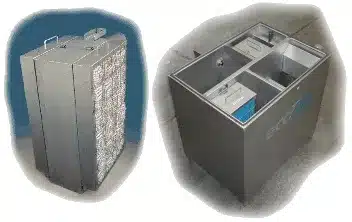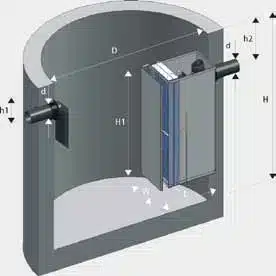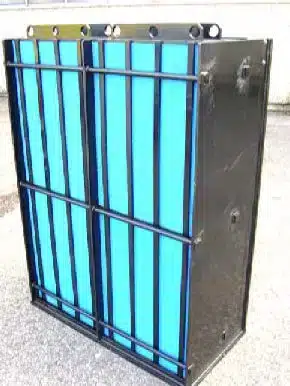In Rhode Island, water is very important. Rhode Island Below Ground OWS help protect our groundwater. They are key to managing industrial wastewater and keeping our aquifers safe. But do we know how crucial they are to us?
Freytech Inc. OWS systems are not just pipes and tanks under our feet. They are quiet protectors of Rhode Island’s water, keeping harmful oils and greases out of our environment. They work hard in busy industrial areas and car shops, keeping our groundwater safe.
As Rhode Island grows and protects the environment, OWS are more important than ever. They make sure businesses follow EPA rules and help keep our underground water systems healthy. It’s time to learn more about these vital parts of our water system.
Key Takeaways
- Below Ground OWS are crucial for Rhode Island’s groundwater management
- These systems remove oil and grease from industrial wastewater
- OWS help businesses comply with EPA regulations
- They play a vital role in protecting Rhode Island’s water resources
- Below Ground OWS are essential for balancing industrial growth and environmental protection
Understanding Below Ground Oil Water Separators in Rhode Island
Below Ground Oil Water Separators are key in Rhode Island for protecting the environment. They remove oil and pollutants from wastewater before it can harm the environment.
Definition and Purpose of OWS Systems
Oil Water Separators are devices that separate oil and grease from water. In Rhode Island, they are essential for keeping groundwater clean and safe. They work by using density differences to let oil float to the top, making it easy to remove.
Regulatory Framework in Rhode Island
The Rhode Island Department of Environmental Management sets rules for Below Ground Oil Water Separators. These rules ensure these systems are installed, maintained, and worked correctly. Regular checks and monitoring of aquifers are done to make sure they meet standards and protect the underground water.
Environmental Impact and Importance
Below Ground Oil Water Separators are very important in Rhode Island. They are a key way to stop groundwater from getting polluted. By taking out oil and harmful substances, they keep Rhode Island’s water and ecosystems healthy and safe for people.
Rhode Island Below Ground OWS: Key Components and Functionality
Below ground oil water separators (OWS) are key to protecting Rhode Island’s environment. They stop oil from getting into water sources like groundwater recharge zones. It’s important to know how they work and what they’re made of for effective use and upkeep.
Core Elements of Below Ground OWS
The core parts of below ground OWS are stainless steel tanks, internal sumps, and adjustable skimmers. These parts work together to keep oil and water apart. The design considers water table levels to work best and keep groundwater clean.
Separation Process and Efficiency
OWS systems use gravity and coalescence to separate oil from water. When dirty water goes in, oil floats up and clean water stays below. This method can make water so clean it has less than 10 parts per million of oil, meeting EPA standards.
Maintenance Requirements
Keeping OWS systems in good shape is key. This means checking them, cleaning them, and watching oil levels. Doing this right keeps the system working well and following well construction rules. It’s also important to think about how it affects water table levels and groundwater recharge zones.
DEM Onsite Wastewater Treatment System (OWTS) Program
The Rhode Island Department of Environmental Management (DEM) runs the Onsite Wastewater Treatment System Program. This program is vital for managing groundwater and protecting Rhode Island’s water. It handles permits for septic systems, including Rhode Island Below Ground OWS.
The OWTS Program has three main steps. First, they check if a site is suitable. Then, they look over treatment system designs. Finally, they make sure the system is installed correctly.
DEM staff do field inspections at key points during the process. This ensures that systems meet state rules. They keep records of septic permits from 1968 to now. You can use an online tool to find historical info and check permit status.
The OWTS Program is key to managing groundwater in Rhode Island. By controlling Below Ground OWS and other systems, they protect the state’s water. This program makes sure systems work well and safely, keeping Rhode Island’s environment safe for the future.
Installation and Permitting Process for Below Ground OWS
Installing Below Ground OWS in Rhode Island needs careful planning and following rules. It has several important steps to make sure it meets state standards and keeps underground water safe.
Site Suitability Assessment
First, experts check if the land is right for the sewage treatment. They look at soil type, groundwater levels, and how close it is to water sources. This is key to keeping the well standards high and water clean.
Treatment System Design Review
After the site checks out, engineers make a plan for the Below Ground OWS. This plan gets a detailed check to make sure it follows Rhode Island’s rules. It usually takes about three weeks for new setups and 1-2 weeks for fixes.
System Installation and Inspection
Once the design gets the green light, the installation starts. DEM staff do field checks at important stages to make sure everything is right. These checks help make sure the Below Ground OWS is set up correctly, keeping underground water safe and meeting the standards. Getting it installed right is key for the system to work well over time, keeping oil and water apart.
Advanced Technologies in Below Ground OWS
Rhode Island Below Ground OWS systems are getting better with new technologies. They help protect the underground water. Now, systems like Highland Tank’s Corella® technology can remove a lot of oil from water.
These systems can cut oil in water to 10 parts per million or less. This means less chance of harming the groundwater.
Many companies are now offering UL® SU2215 labeled units. These units have special coatings and oil alarm systems for safety. In Rhode Island, keeping water clean is very important.
New designs include slant rib clarification plates. These plates are great at handling heavy solids. They are perfect for places with tricky underground water paths.
These systems can be customized for different needs. This makes Rhode Island Below Ground OWS systems more useful than ever.
These separators are crucial in storm water systems. They process runoff to meet the US EPA’s Clean Water Act standards. With effective oily water treatment, facilities protect the environment and dodge big fines.










